Clarity for Change
A confused mind always says NO
We started the month of July sharing 3 obstacles to change: Negativity, Exclusion, and Confusion. Then followed up with how to turn Negativity into Positivity, and Exclusion into Inclusion. Today we are sharing why clarity is important for change and how to have clarity instead of confusion.
A lack of clarity makes us feel uncertain, so rather than risk making a mistake, the natural human response is to say 'NO'!
If you want people's cooperation - if you want them to say yes to change - you need to make them understand clearly what you want them to do and how it affects them.
Being clear won't always win people's hearts and minds. In fact, It may bring up people's resistance. Yet, it’s the best chance you have for winning them over.
One thing is sure: When you confuse people, you lose all hope of gaining their cooperation, because a confused mind always says NO.
"Any intelligent fool can make things bigger and more complex... It takes a touch of genius --- and a lot of courage to move in the opposite direction." - Albert Einstein
How to communicate with clarity
1. Tell people what you're going to tell them
In your introduction, explicitly tell people what you're talking about. Wether it’s a one-on-one or a talk-to-many, give an overview of the subject, what your main points will be, and the structure of the conversation. Presenting your message effectively in a logical, organized, and consistent way will facilitate your listener’s ability to easily understand and retain your message.
2. Show the larger picture and what’s in it for them.
Use a story or a metaphor - something they can visualize in their imaginations - as a framework to help them see how things fit together. Explain what the change will mean for them, both the good and the bad, so people can prepare and understand.
3. Keep it short and simple
Present your material in bite-size pieces. The other person can only listen to, process and understand so much information without hitting information overload. In educational psychology we call this chunking.
Chunking refers to the strategy of breaking down information into bite-sized pieces so that human brain can easily digest the new information. When information is organized and grouped together, it is making the most efficient use of our short-term memory. When information is chunked into groups, the brain can process them easier and faster.
For example, if you are offering the advantages of a change to be implemented, rather than dump the whole load onto the person, you chunk it.
You offer one element of the change.
You discuss the element and its practical implications for the person and and organization.
You ask for their reflection and understanding of the issue.
You then move onto the next element.
After you have communicated one important message—a “chunk”—you check how much the person understood by asking something like, “What will you tell your direct report about how the new software should be use in scheduling deliveries?”
The key element here is that the more you talk without allowing people to assimilate what you are saying, the less likely they will be to understand. More likely they will get lost and not be able to implement anything.
Therefore, Give them a little information and then stop talking. Let them reflect and ask questions. Only then move to your next point.
4. Don’t send mixed messages
Mixed messages are confusing and can be dangerous. As a leader, you need to make sure your words and actions match. You can’t tell your supervisors to develop a more coaching style if you yourself are using an authoritarian style. You can say something is urgent and then don't do any follow up for a month. Your words and your actions have to match.
Your words and feelings also need to match. If you are talking about a new way to engage more people in the decision making, but are not feeling too convinced that it will work, your feelings will have a way of sneaking out and confuse people. When feelings are different from your verbal message, your unconscious non-verbals will signal it and people will be confused.
5. Tell people what you want them to do
If you want people to support the proposed change, learn new ways to implement a strategy, or approve your budget or proposal, then tell them clearly what you want them to do.
Remember. . .
Being clear isn't everything and, in itself, won't guarantee that you'll gain people's agreement, and cooperation. But confusing people will, without fail, shut them down.
If you want to get things done, and if implementing change depends on other people's involvement, be clear.
Confucius said it another way: "If speech is not clear, then what is said is not what is meant. If what is said is not what is meant, then what ought to be done remains undone."
P.S.
If you want to increase your communication skills, Strategic Executive Coaching could be a good next step for you.
